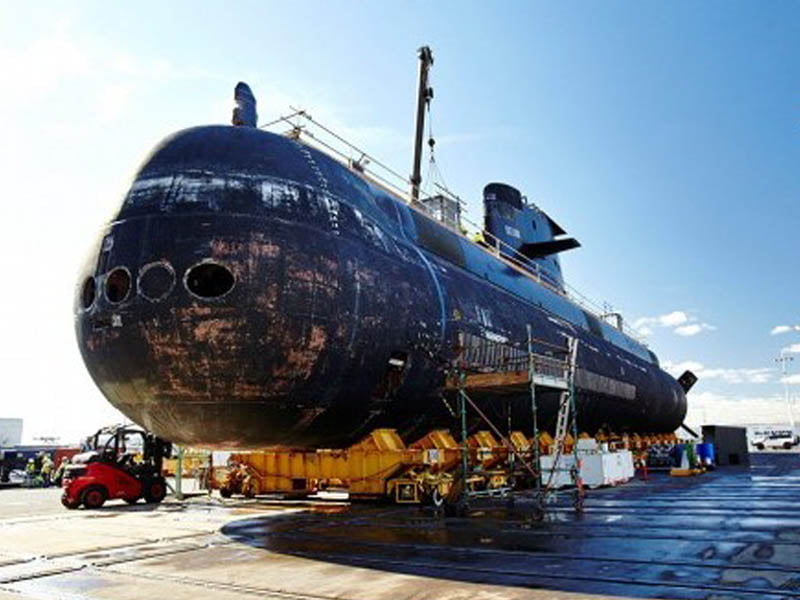Hot on the heels of Australia’s landmark $90 billion Naval Shipbuilding Plan, a debate has been raging about a new technology that will first supplement and eventually supplant many of the functions that are now performed by Australia’s submarines – the NSP’s largest component.
Right now in the Royal Australian Navy, the long-touted underwater drone technology, officially known as unmanned underwater vehicles (UUV), is finally moving away from the research lab and into reality.
It’s not just for defence and related purposes that UUVs are being used. Ocean and climate researchers are also pinning their hopes on the new class of submersibles to considerably add to man’s knowledge about the ocean, and to be able to make better predictions about it.

UUV’s are increasingly coming in all shapes and sizes. Broadly speaking there are two classes of UUVs: remotely operated underwater vehicles (ROVs) controlled by a remote human operator in the same way that aerial drones are, and the sophisticated robots that are autonomous underwater vehicles (AUVs) that operate independently of direct human control.
Some pundits critical of the Future Submarines program that is the centre-piece – in terms of cost – of the Naval Shipbuilding Plan, have been saying for a number of years that UUV’s will obviate the need for Australia’s submarine program, which is valued at a very rubbery $50 billion (as per the admission of Admiral Greg Sammut recently.
It is also generally conceded by most, including the hefty phalanx of skeptics (and sore losers) of Australia’s current Future Submarines plan, that large submarines will remain necessary for the type of long-distance operations Australia’s force will need to perform.
As with many things the truth is probably somewhere in the middle, although its something of a truism that technological advances tend to be initially over-hyped, while the eventual ramifications are under-estimated.
As Euan Graham Director of International Security Program at the Lowy Institute wrote recently “…in future they will be likely to function as standoff platforms for launching underwater drones, which ‘will be the platform of choice for operations in areas of significant risk, such as in littoral waters or choke points, where the adversary can focus its resources.”
Early model UUVs were used to gather information on weather currents, ocean temperatures and topography, but their capabilities are growing. Much of the early work on UUV is around sensors that will change the way both researchers and defence forces use the ocean.
“More types of sensors will emerge from the research labs. They’ll exploit much subtler physical, chemical and biological changes in the environment arising from the presence or activity of a submarine,” Professor Roger Bradbury of the National Security College at the Australian National University wrote recently in The Australian.
“The sensors themselves will rapidly improve in sensitivity, and rapidly reduce in size and cost.”
“The range of sensor platforms will expand from manned platforms such as ships and planes to unmanned and increasingly autonomous aerial, surface and underwater drones.
“The dwell time of the platforms will increase as batteries and other energy systems improve. And the computational and networking ability of these swarms of sensors will increase, allowing synoptic real-time images of targeted waters to be developed”.
But as UUVs develop they will become bigger and more sophisticated, although from a warfare point of view one of the main function of a defence submarine is being able to vertically launch a ballistic missile, an achievement that is some time away for UUVs.
Still, the varying submersible craft in the growing UUV Family are being developed by all major military powers, including US, China, Russia and a number of European nations.
The RAN is following in the footsteps of the United States Navy, which in September this year created its first ever dedicated underwater drone unit which is known as Unmanned Undersea Vehicle Squadron One, or UUVRON 1, after it split it off from what was reported as “a secretive submarine unit.”
“Today we are transitioning our UUV detachment into the first UUV squadron,” US Navy Captain Robert Gaucher, the outgoing head of DEVRON 5 said during the event. “Why is this historical? It’s because in standing up UUVRON 1, it shows our Navy’s commitment to the future of unmanned systems and undersea combat”.
With so much going on, there are obvious opportunities for Australian technology companies, particularly as the funds start to flow into the defence budget.
The government’s stated rationale in building new submarines and ships in Australia, despite the fact that cost savings could have been achieved offshore, was to develop local capacity and industry, and this clearly extends to UUVs.
So it’s interesting to note that the world’s only publicly listed unwater drone company Aquabotix Technology Corporation, is quoted on the Australian Securities Exchange.
The company, which makes UUV’s for a range of markets and has inked a contract with the US Coast Guard, believes it has identified a gap in the consumer market of a viable “recreational underwater drone” that CEO Durval Tavares reckons is a potentially large market segment for the company.
Still, after raising $7 million for its March initial public offering, shares in Aquabotix with the canny Australian Securities Exchange code of UUV, have drifted lower.
It’s encouraging to see that investors are backing UUV technology but for now, the real action, at present, remains tapping into the military and research side of UUVs.
Do you know more? Contact James Riley via Email.

